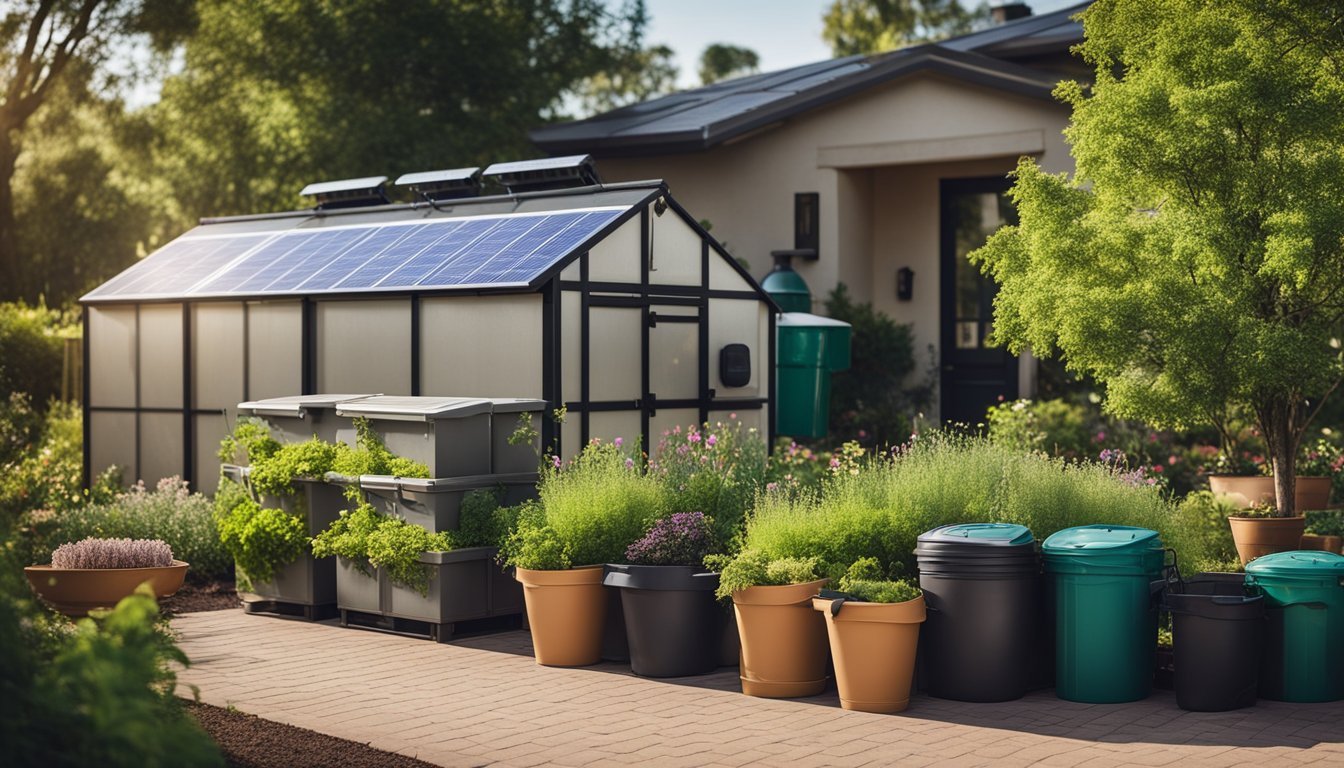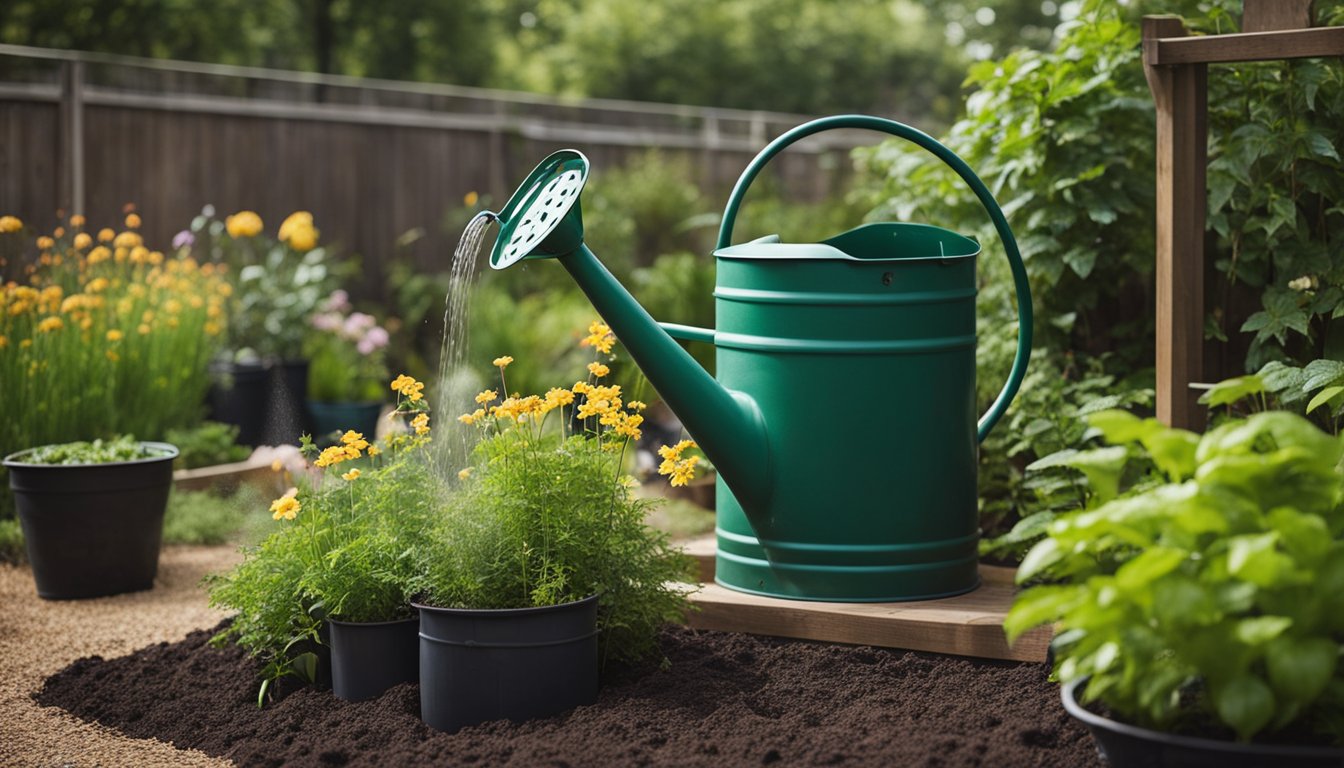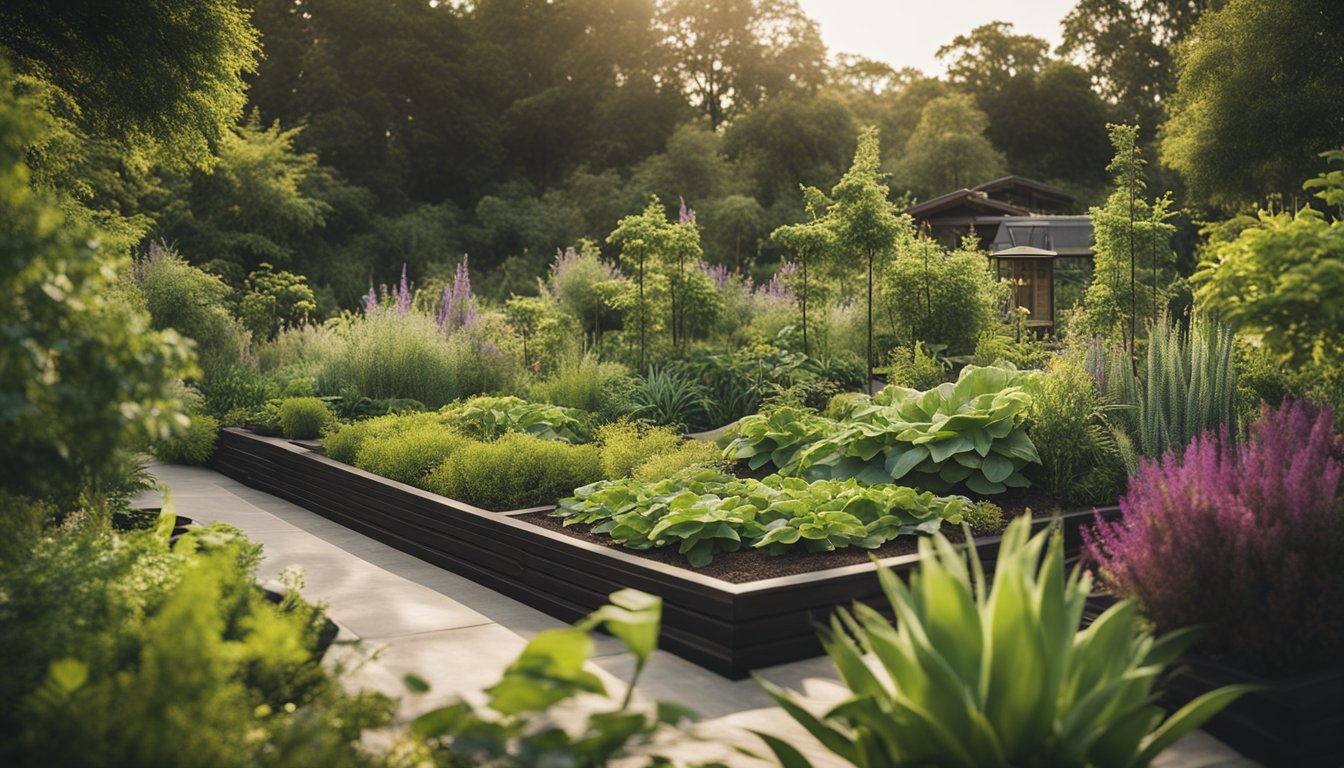Late updated: 16 Oct 2024 12:10
Written by: Daniel Harper
Eco-Friendly Techniques For Garden Renovation: Transform Your Outdoor Space
Renovating a garden offers a unique opportunity to embrace eco-friendly techniques, aligning aesthetic improvements with sustainability. Our gardens can be transformed into thriving ecosystems by incorporating methods that prioritise water conservation and soil health. By focusing on organic gardening practices, we can create outdoor spaces that are not only visually appealing but also sustainable and environmentally friendly.

Choosing the right plants is crucial in this transformation. Native species that require minimal watering and fertilising can significantly reduce the environmental impact and enhance biodiversity. Incorporating permeable surfaces like gravel paths helps prevent water runoff, supporting the local ecosystem.
Implementing a rainwater collection system can promote water conservation, connecting our gardens to a broader picture of environmental responsibility. These small yet impactful changes not only preserve the environment but can also reduce long-term maintenance costs, making them a win-win for both us and the planet.
Key Takeaways
- Eco-friendly gardening enhances sustainability and biodiversity.
- Native plants and permeable surfaces reduce environmental impact.
- Water conservation practices lower maintenance costs.
Assessing Your Garden's Eco-Potential
Before embarking on a garden renovation project, it’s crucial to evaluate the ecological aspects of your outdoor space. This involves examining soil conditions, understanding the local climate and biodiversity, and implementing effective water management strategies.
Evaluating Soil Conditions
Our garden's foundation lies in its soil, which supports plant growth and serves as a habitat for various organisms. Soil health is vital, and we need to assess it thoroughly.
Start by testing the soil's pH and nutrient levels using a home testing kit or professional service. This helps us understand the soil's current state and what amendments might be necessary. We should also observe the soil texture and drainage. Is it sandy, clay-like, or loamy? Each type requires different management techniques.
Organic matter such as compost can be introduced to improve soil structure and provide nutrients. Composting not only enhances fertility but also promotes biodiversity by fostering earthworms and beneficial microbes. Through careful evaluation, we can ensure our soil supports sustainable plant growth and contributes to a more robust ecosystem.
Understanding Local Climate and Biodiversity
Our garden thrives best when we align with the local climate and recognise the area's unique biodiversity. This involves observing weather patterns, temperature variations, and precipitation levels, all of which are affected by climate change.
We must identify indigenous plants that are naturally adapted to local conditions. Such species require less maintenance and provide habitat for local wildlife. Supporting native plant life fosters a symbiotic relationship with the environment.
Incorporating plants that bloom at different times of the year can enhance visual appeal and provide continuous support for pollinators throughout the seasons. Understanding our local climate influences the choice of plants and helps maintain a sustainable garden that invites local fauna.
Water Management Strategies
Water is a precious resource, and its conservation is key to maintaining an eco-friendly garden. Implementing water conservation techniques is a priority.
Rainwater harvesting systems, such as installing a rain barrel, allow us to capture and store water for irrigation. Using drip irrigation systems or soaker hoses can reduce water waste by delivering it directly to plant roots.
Filtration systems can be utilised to purify collected rainwater, ensuring it is safe for use. Mulching plays a dual role: retaining moisture in the soil and suppressing weeds. By adopting efficient water management strategies, we can minimise water usage and maintain our garden's health even during dry spells.
Implementing Eco-Friendly Gardening Techniques

Transforming our gardens using eco-friendly practices enhances the environment and fosters local biodiversity. Key techniques involve utilising organic matter, promoting native species, and creating habitats that support wildlife.
Incorporating Composting and Organic Mulch
Composting is fundamental in eco-friendly gardening. By converting organic waste like kitchen scraps and garden trimmings into nutrient-rich compost, we enrich our soil. Compost piles should be managed regularly to maintain aeration and moisture, accelerating the breakdown process.
Organic mulch is another powerful tool. This includes materials like wood chips or straw, which prevent weeds, retain moisture, and improve soil health as they decompose. Mulching around plants also reduces the need for chemical fertilisers and enhances carbon sequestration, contributing to a decreased carbon footprint.
Adopting Sustainable Planting Practices
Implementing sustainable planting involves selecting native plants and utilising companion planting. Native species are adapted to local climates and soil conditions, reducing the need for water and pest control. Companion planting can boost plant growth and deter pests naturally, minimising the necessity for chemical interventions.
Raised beds and vertical gardening further optimise space and resources. Raised beds can improve drainage and soil quality, while vertical structures make efficient use of space, perfect for smaller gardens. Incorporating permeable surfaces such as gravel or recycled materials can also help manage water runoff.
Creating Habitat for Pollinators and Local Wildlife
A wildlife-friendly garden is essential for sustaining pollinators and other beneficial species. Planting flowers and herbs that attract bees, butterflies, and birds provides them with food and shelter. Consider allowing portions of the garden to grow wild; this offers shelter and promotes a natural pest control balance.
Integrating features like drip irrigation ensures efficient water use, supporting plant health without water waste. Solar lights can light paths without disturbing nocturnal wildlife. Using xeriscaping techniques aids in conserving water resources, especially important in regions prone to drought. By focusing on these practices, we create a resilient ecosystem that supports biodiversity and lessens our environmental impact.
Frequently Asked Questions

In our exploration of eco-friendly garden renovation, several practices can optimise both the environmental and aesthetic value of a garden. Transforming a garden with sustainability in mind involves strategic planning, plant selection, and practical maintenance techniques.
What are the best practices for establishing a sustainable vegetable garden?
Choosing organic seeds is essential. We should also focus on crop rotation to maintain soil health, and utilise compost to enrich the soil naturally. Incorporating companion planting can deter pests without chemicals while optimising space.
How can I design a garden that is both environmentally friendly and low maintenance?
Incorporating native plants is key. They are adapted to local conditions, reducing the need for water and chemicals. We can also use mulch extensively, which helps conserve moisture and suppress weeds, thus minimising maintenance.
Which sustainable garden principles are most beneficial for educational settings?
Creating demonstration areas with clear examples of water conservation and waste recycling is valuable. We should focus on biodiversity to teach the importance of diverse ecosystems by planting a mix of native species and using permaculture designs.
Could you provide examples of sustainable landscaping that combine aesthetics with eco-friendliness?
Incorporating rain gardens can enhance beauty and manage stormwater effectively. We can use natural materials like stone and wood to create pathways and features that complement plantings while remaining sustainable.
What types of plants should be considered for creating a biodiverse and sustainable garden?
Native wildflowers, grasses, and shrubs are excellent choices. These plants attract pollinators and wildlife. We can also integrate plants with varying flowering times to ensure continuous blooms and biodiversity throughout the seasons.
In what ways can I adapt my current garden to align with sustainable gardening practices?
Implementing a rainwater collection system can be a straightforward change. Adding composting bins allows us to recycle garden waste into valuable nutrients. To enhance sustainability, transitioning lawns to more diverse plantings can reduce water and fertiliser needs.
